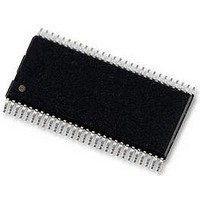DS90C383BMT National Semiconductor, DS90C383BMT Datasheet - Page 9

DS90C383BMT
Manufacturer Part Number
DS90C383BMT
Description
IC, LVDS TRANSMITTER, 3.6V, TSSOP-56
Manufacturer
National Semiconductor
Datasheet
1.DS90C383BMT.pdf
(11 pages)
Specifications of DS90C383BMT
Supply Voltage Range
3V To 3.6V
Power Dissipation Pd
1.63W
Operating Temperature Range
-10°C To +70°C
Digital Ic Case Style
TSSOP
No. Of Pins
56
Voltage, Vcc
4V
Supply Voltage Max
3.6V
Rohs Compliant
Yes
No. Of Drivers
4
Lead Free Status / RoHS Status
Lead free / RoHS Compliant
Available stocks
Company
Part Number
Manufacturer
Quantity
Price
Part Number:
DS90C383BMT
Manufacturer:
NS/国半
Quantity:
20 000
Part Number:
DS90C383BMTX
Manufacturer:
NS/国半
Quantity:
20 000
Company:
Part Number:
DS90C383BMTX/NOPB
Manufacturer:
NS/TI
Quantity:
180
Company:
Part Number:
DS90C383BMTXNOPB
Manufacturer:
NSC
Quantity:
3 069
Applications Information
The DS90C383B are backward compatible with the
DS90C383/DS90CF383, DS90C383A/DS90CF383A and
are a pin-for-pin replacement.
This device may also be used as a replacement for the
DS90CF583 (5V, 65MHz) and DS90CF581 (5V, 40MHz)
FPD-Link
modifications:
1. Change 5V power supply to 3.3V. Provide this supply to
2. The DS90C383B transmitter input and control inputs
3. To implement a falling edge device for the DS90C383B,
TRANSMITTER INPUT PINS
The TxIN and control input pins are compatible with LVC-
MOS and LVTTL levels. These pins are not 5V tolerant.
TRANSMITTER INPUT CLOCK/DATA SEQUENCING
The DS90C383B does not require any special requirement
for sequencing of the input clock/data and PD (PowerDown)
signal. The DS90C383B offers a more robust input sequenc-
ing feature where the input clock/data can be inserted after
the release of the PD signal. In the case where the clock/
the V
accept 3.3V LVTTL/LVCMOS levels. They are not 5V
tolerant.
the R_FB pin (pin 17) may be tied to ground OR left
unconnected (an internal pull-down resistor biases this
pin low). Biasing this pin to Vcc implements a rising edge
device.
CC
, LVDS V
Transmitters
CC
and PLL V
with
certain
CC
of the transmitter.
considerations/
9
data is stopped and reapplied, such as changing video mode
within Graphics Controller, it is not necessary to cycle the PD
signal. However, there are in certain cases where the PD
may need to be asserted during these mode changes. In
cases where the source (Graphics Source) may be supply-
ing an unstable clock or spurious noisy clock output to the
LVDS transmitter, the LVDS Transmitter may attempt to lock
onto this unstable clock signal but is unable to do so due the
instability or quality of the clock source. The PD signal in
these cases should then be asserted once a stable clock is
applied to the LVDS transmitter. Asserting the PWR DOWN
pin will effectively place the device in reset and disable the
PLL, enabling the LVDS Transmitter into a power saving
standby mode. However, it is still generally a good practice
to assert the PWR DOWN pin or reset the LVDS transmitter
whenever the clock/data is stopped and reapplied but it is
not mandatory for the DS90C383B.
SPREAD SPECTRUM CLOCK SUPPORT
The DS90C383B can support Spread Spectrum Clocking
signal type inputs. The DS90C383B outputs will accurately
track Spread Spectrum Clock/Data inputs with modulation
frequencies of up to 100kHz (max.)with either center spread
of
POWER SOURCES SEQUENCE
In typical applications, it is recommended to have V
V
separate de-coupling bypass capacitor groups. There is no
requirement on which VCC entering the device first.
CC
±
2.5% or down spread -5% deviations.
and PLL V
CC
from the same power source with three
www.national.com
CC
, LVDS











